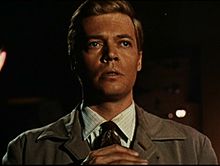
Leopold Samuel Marks, was an English writer, screenwriter, and cryptographer. During the Second World War he headed the codes office supporting resistance agents in occupied Europe for the secret Special Operations Executive organisation. After the war, Marks became a playwright and screenwriter, writing scripts that frequently utilised his war-time cryptographic experiences. He wrote the script for Peeping Tom, the controversial film directed by Michael Powell that had a disastrous effect on Powell's career, but was later described by Martin Scorsese as a masterpiece. In 1998, towards the end of his life, Marks published a personal history of his experiences during the war, Between Silk and Cyanide, which was critical of the leadership of SOE.

Psycho is a 1960 American horror film produced and directed by Alfred Hitchcock. The screenplay, written by Joseph Stefano, was based on the 1959 novel of the same name by Robert Bloch. The film stars Anthony Perkins, Janet Leigh, Vera Miles, John Gavin, and Martin Balsam. The plot centers on an encounter between on-the-run embezzler Marion Crane (Leigh) and shy motel proprietor Norman Bates (Perkins) and its aftermath, in which a private investigator (Balsam), Marion's lover Sam Loomis (Gavin), and her sister Lila (Miles) investigate her disappearance.
A snuff film, snuff movie or snuff video is a type of film, often explicit, that shows, or purports to show, scenes of actual homicide. The victims are supposedly typically lured to their murders by false pretenses and their murder is filmed and then produced for the goal of a profit or financial gain.

Voyeurism is the sexual interest in or practice of watching other people engaged in intimate behaviors, such as undressing, sexual activity, or other actions of a private nature.
A Peeping Tom is a nickname for a male voyeur, from the character Peeping Tom, who spied on the Lady Godiva's naked ride.
A slasher film is a subgenre of horror films involving a killer stalking and murdering a group of people, usually by use of bladed or sharp tools. Although the term "slasher" may occasionally be used informally as a generic term for any horror film involving murder, film analysts cite an established set of characteristics which set slasher films apart from other horror subgenres, such as monster movies, splatter films, supernatural and psychological horror films.

Michael Latham Powell was an English filmmaker, celebrated for his partnership with Emeric Pressburger. Through their production company The Archers, they together wrote, produced and directed a series of classic British films, notably The Life and Death of Colonel Blimp (1943), A Canterbury Tale (1944), I Know Where I'm Going! (1945), A Matter of Life and Death, Black Narcissus (1947), The Red Shoes (1948), and The Tales of Hoffmann (1951).

The Lodger: A Story of the London Fog is a 1927 British silent thriller film directed by Alfred Hitchcock and starring Marie Ault, Arthur Chesney, June Tripp, Malcolm Keen and Ivor Novello. Hitchcock's third feature film, it was released on 14 February 1927 in London and on 10 June 1928 in New York City. The film is based on the 1913 novel The Lodger by Marie Belloc Lowndes and the play Who Is He? co-written by Belloc Lowndes. Its plot concerns the hunt for a Jack the Ripper-like serial killer in London.
In psychology and psychiatry, scopophilia or scoptophilia is an aesthetic pleasure drawn from looking at an object or a person. In human sexuality, the term scoptophilia describes the sexual pleasure that a person derives from looking at prurient objects of eroticism, such as pornography, the nude body, and fetishes, as a substitute for actual participation in a sexual relationship.
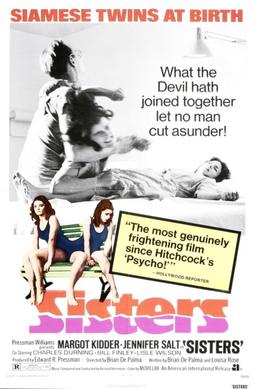
Sisters is a 1972 American psychological horror film directed by Brian De Palma and starring Margot Kidder, Jennifer Salt, and Charles Durning. It follows a French Canadian model's separated conjoined twin who is suspected of having committed a brutal murder witnessed by a newspaper reporter in Staten Island, New York City.

Karlheinz Böhm was a German-born Austrian actor and philanthropist. He took part in 45 films and became well known in Austria and Germany for his role as Emperor Franz Joseph I of Austria in the Sissi film trilogy and internationally for his role as Mark, the psychopathic protagonist of Peeping Tom, directed by Michael Powell. He was the founder of the trust Menschen für Menschen, which helps people in need in Ethiopia. He also received honorary Ethiopian citizenship in 2003.
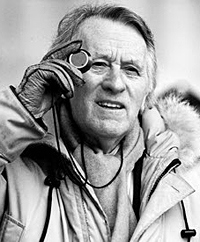
Frederick William Francis was an English cinematographer and film director.

Eyes Without a Face is a 1960 French-language horror film directed by Georges Franju. The film stars Pierre Brasseur and Alida Valli. Based on the novel of the same name by Jean Redon, it revolves around a plastic surgeon who is determined to perform a face transplant on his daughter, who was disfigured in a car accident. During the film's production, consideration was given to the standards of European censors by minimizing gore. Although Eyes Without a Face was cleared by censors, its release in Europe caused controversy. Critical reaction ranged from praise to disgust.

The Honeymoon Killers is a 1970 American crime film written and directed by Leonard Kastle, and starring Shirley Stoler and Tony Lo Bianco. Its plot follows a sullen, overweight nurse who is seduced by a handsome con man, with whom she embarks on a murder spree of single women. The film was inspired by the true story of Raymond Fernandez and Martha Beck, the notorious "lonely hearts killers" of the 1940s.
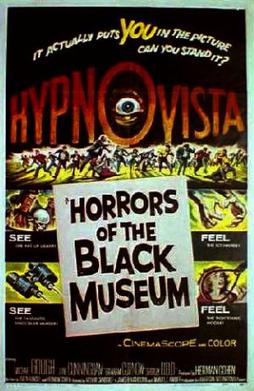
Horrors of the Black Museum (1959) is a British-American horror film directed by Arthur Crabtree and starring Michael Gough, June Cunningham, Graham Curnow and Shirley Anne Field.
Die Watching is a 1993 American direct-to-video erotic thriller film starring former teen idol Christopher Atkins as a psychotic pornographic film director named Michael Terrence, who moonlights as a voyeuristic murderer. The story borrows heavily from Michael Powell's 1960 British film Peeping Tom. It was originally released on VHS in the United States on August 25, 1993 and on DVD by Image Entertainment in 1999. It is the last film to be released by New World Pictures.

Halloween is a 1978 American independent slasher film directed, co-written, and scored by John Carpenter. Starring Donald Pleasence and Jamie Lee Curtis, with P. J. Soles and Nancy Loomis in supporting roles, the film is set mostly in the fictional town of Haddonfield, Illinois. The plot centers on a mental patient, Michael Myers, who was committed to a sanitarium for murdering his teenage sister on Halloween night when he was a child. Fifteen years later, having escaped and returned to his hometown, he stalks teenage babysitter Laurie Strode and her friends while under pursuit by his psychiatrist Dr. Samuel Loomis.
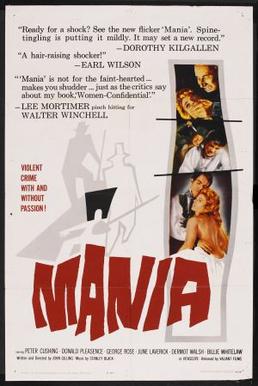
The Flesh and the Fiends is a 1960 British horror film directed by John Gilling and starring Peter Cushing, June Laverick and Donald Pleasence. 19th-century medical doctor Robert Knox purchases human corpses for research from a murderous pair named Burke and Hare. The film is based on the true case of Burke and Hare, who murdered at least 16 people in 1828 Edinburgh and sold their bodies for anatomical research.
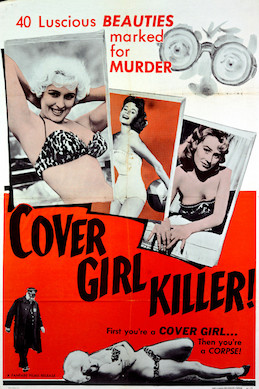
Cover Girl Killer is a 1959 black and white British thriller film directed and written by Terry Bishop and starring Harry H. Corbett, Felicity Young, Victor Brooks and Spencer Teakle.
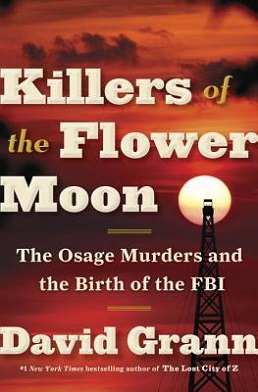
Killers of the Flower Moon: The Osage Murders and the Birth of the FBI is a 2017 nonfiction book by American journalist David Grann about the Osage murders. Time magazine listed Killers of the Flower Moon as one of its top ten nonfiction books of 2017.

